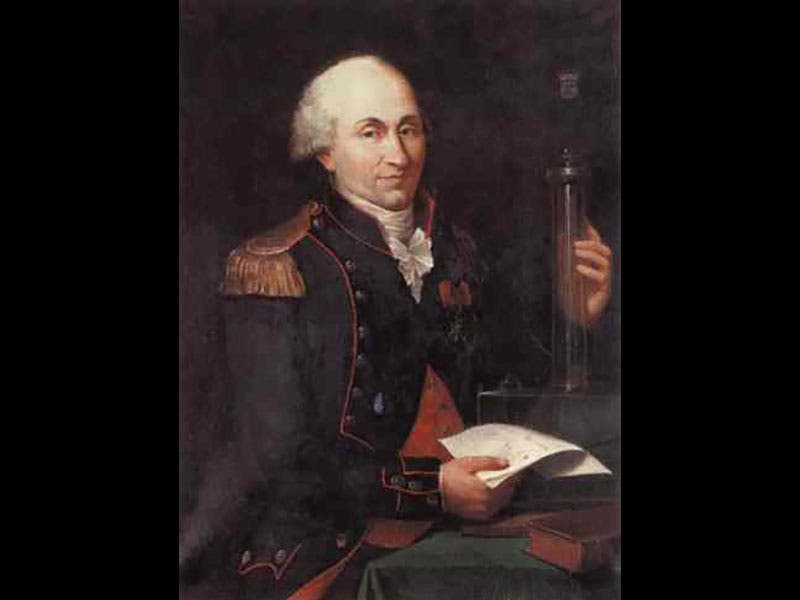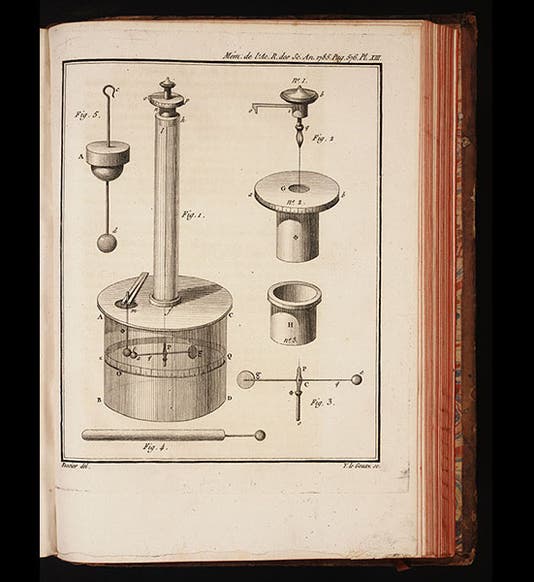Scientist of the Day - Charles-Augustin de Coulomb




Charles-Augustin de Coulomb, a French physicist, was born June 14, 1736. In 1785, Coulomb published a paper on electricity that was a milestone in several ways. First, he established that electrical attraction and repulsion, like universal gravitation, conformed to an inverse-square law, which is a concise way of saying that the electrical attraction between two opposite charges depends on the distance between them, and that when the distance is doubled, the force falls off by a factor of four. The force of attraction also depends on the size of the charges. So the basic law of electricity suddenly looked very much like Newton's law of gravitational attraction, and the Newtonian umbrella now covered a branch of physics that until then had stood all by itself.
The other novel feature of Coulomb's paper was his description of the torsion balance, the instrument he invented that allowed him to measure electrical attraction and repulsion. It consists basically of a thin filament that can twist freely, from which is suspended a dumbbell-shaped structure that can be electrically charged. As the globes of the dumbbell are attracted or repelled from two stationary charged globes, it twists the filament, and the amount of twisting can be used to determine the magnitude of the force. Coulomb's balance was much more sensitive than any previous such device and could measure incredibly small forces. An engraving of his torsion balance was published with his paper in the Memoires of the French Academy of Sciences, a journal that we have in our serials collections (first image). Coulomb would publish 6 more papers on electricity and magnetism in the Memoires by 1791. For his efforts, he has become a unit of electrical charge, the coulomb, and if he moves for one second, be becomes an ampere.
A portrait of Coulomb, and his torsion balance, hangs in the Musée du Génie in Angers (second image). Coulomb (and his torsion balance) has also been commemorated on a French postage stamp (third image), and Coulomb is one of the 72 French scientists whose names are enshrined on the frieze just below the first balcony of the Eiffel Tower (fourth image).
Dr. William B. Ashworth, Jr., Consultant for the History of Science, Linda Hall Library and Associate Professor, Department of History, University of Missouri-Kansas City. Comments or corrections are welcome; please direct to ashworthw@umkc.edu.






